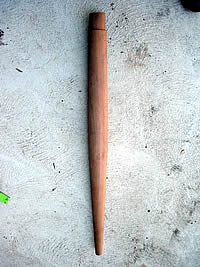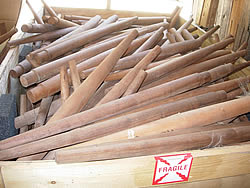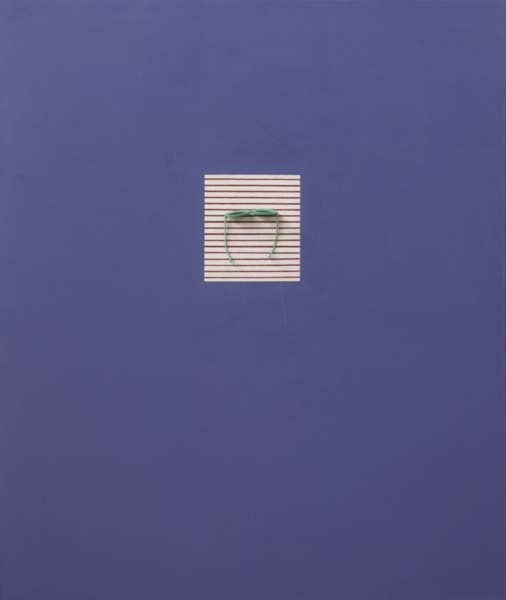Schwarz
View current page
...more recent posts
i suppose this guy thinks hes helping. what a knucklehead :
For a small city, St. Louis has an extraordinarily rich history of modernist architecture. Isadore Shank, William Adair Bernoudy, Harris Armstrong, Frederick Dunn, Charles Nagel, Ralph Cole Hall, Edouard Mutrux, Hank Bauer, and Eugene Mackey were all based here at one time or other. Most of their designs -- located in the wealthier, green and leafy suburbs west of the city -- were built during the golden age of St. Louis Modernism roughly between 1930 and 1970 when status was not to be distinguished solely on the square footage of a home.
Modernism, however, got a bad name due to its association with the soulless Internationalist Style of Ludwig "Less is More" Mies van der Rohe and Philip Johnson and their ubiquitous glass boxes designed for an urban population of automobiles and automatons rather than residents, tourists and shoppers. Being socialists first and architects second, Johnson and Mies were concerned mainly with political and social questions -- and thus built structures that reflected their vision of a workers' paradise -- as well as academic questions such as how to express the structure of a building externally. In the process, they forgot about the poor fish who would live and work among these sterile monstrosities.
Sadly they brought the same aesthetic to their domestic buildings, and nowhere was this more evident than in Johnson's Glass House and Mies' Farnsworth House. Historian Franz Schulze noted that the latter is "more nearly temple than dwelling, and it rewards aesthetic contemplation before it fulfills domestic necessity.�
However these domestic "temples" were the exception, not the rule. Unlike Mies's skyboxes, the bulk of modernist residential architecture was warm, open and organic, commingling brick, wood, stone and glass to create a sense of serenity which blurred the distinction between "inside" and "outside." Most important, they took into account the people who would live there. And unlike today's cookie cutter mansions, they were elegant and original. Was there ever a more breathtakingly beautiful home than Frank Lloyd Wright's Fallingwater, a home built not overlooking a waterfall, but over a waterfall.
The son of modernist Richard Neutra is looking for someone to buy and protect his father's last commercial building. It has been listed for sale for $3.5 million since November.
So far, Dion Neutra has had several offers, "but none that quite hit the nail on the head," he said in an e-mail. He insists that the National Register-listed building be sold with a protective conservation easement.
Built in 1950 as Neutra's office, the 4,800-square-foot building in Silver Lake, Calif., includes two apartments in the rear. Neutra wants to sell the building to establish an endowment to allow his Los Angeles-based Neutra Institute for Survial Through Design to continue.
inflate-o-pub
via j zoller
It seemed destined for the wrecking ball, like so many other midcentury buildings by the architect Paul Rudolph.
It wasn’t that the owners didn’t appreciate the sleek, rectangular house; they simply wanted a larger vacation home for the site, on a scenic bluff in Watch Hill, R.I.
two guys and a photograph
buy of the week, hammer price $450.00
Muriel
Wallace and Donahue (20th Century) Muriel, 1983; Oil and latex on canvas with sunglasses; Signed, dated and titled; 68" x 56"; Provenance: Margo Leavin Gallery, Los Angeles (label on verso); Private Collection
rubens tube
also via john zoller
ACME Klein Bottle
via j zoller
Over the last two decades as Mr. Serra’s work has become more and more sought-after by institutions and collectors, these kinds of installation scenes, worthy of the Army Corps of Engineers, have played out countless times around the world, with sculptures arriving by boat and truck at sites from Seattle to Spain to Qatar.
What he does do is design buildings that are uncommonly responsive to the environment in which they sit, to the indigenous physiognomy of the landscape, the angle of the sun, the path of the wind, the shapes of the leaves on the trees. By mixing together Australia’s vernacular style with the clean lines of classic Modernism, he has created an architecture that’s both true to the place and unexpectedly rigorous, like a bow and arrow made out of titanium. The recent widening of his reputation owes a lot to the profession’s gradual conversion to the gospel of environmentalism, but he remains stubbornly autonomous and openly wary of catchphrases and clichés. (Of “sustainable architecture” he noted: “Most of it is bloody awful. Much of it isn’t architecture, and some of it isn’t sustainable.”) But the Pritzker is a machine for star-making, and as a result, this most resolutely local of architects has slowly acquired an international profile.from this weeks nyt magazine eco-tecture issue
nice richard pettibone lot
squandered heritageNOLA -- We have written about the imminent danger list before. The difficulty in tracking this list is that there are simply too many properties listed to maintain an effective overight.
This spring, a plane-shaped piece of roadside architecture is preparing for takeoff.
Built as a Texaco gas station in 1930 in Powell, Tenn., the small building was falling down when a group formed four years ago. "It was self-destructing," says Rock Bernard, head of the Airplane Filling Station Preservation Association. "It had been abused. It had had little or no maintenance at all."
Now the nonprofit, hoping to create an office or visitors center, is fixing the plane's right wing and windows.
Despite the success of saving Johnson’s masterpiece, other less well-known Modernist buildings across the United States are now facing demolition. The main threat comes from skyrocketing land prices; these landmark buildings are prized more for their land than their architecture, say design curators and preservation experts nationwide. Barry Bergdoll, chief curator of architecture and design at MoMA, believes that for every Modernist structure saved, two are torn down and many are altered. Other experts believe the number of modernist buildings demolished could be considerably higher.
sonnenbrillen präzisionswerfen bei orschlurch.de - sonnebrille sonne
via jz
chernobyl at 21
via john zoller
Tiravanija’s redux of Untitled 1992 (Free) acts as a kind of invading organism that usurps the function of the gallery, displacing it with real life. All this is underscored by another recreation at Zwirner’s, next to Tiravanija’s. It is a signature piece of post-minimalist sculpture by the late Gordon Matta-Clark, made exactly 20 years before the Tiravanija, and as fate would have it, at the exact same address on Greene Street in SoHo where Tiravanija originally made Untitled 1992 (Free).
Nevelson was sui generis. Though a quintessential modernist, she was no joiner. During her long life of artistic activity, she studied Cubism, flirted with Surrealism, and imbibed the influence of Minimalism, but no avant-garde movement could claim her. She was Mark Rothko's favorite sculptor, but she wasn't hanging out with the Ab-Ex crowd at the Cedar Tavern. Jed Perl, who gives her short shrift in New Art City, his survey of mid-20th-century Manhattan's artistic avant-gardes, links her work with the sculptor Richard Stankiewicz's "junkyard Constructivism." But Stankiewicz (a generation younger) and David Smith (her nearer contemporary) were welders, while she worked with the regenerative capacities of wood, a once-living medium. And the room-size environments she began fabricating in the 1960s preceded the advent of installation art by some 20 years.
Tomorrow, the Maison Tropicale, a small aluminum-paneled house built in 1951 by Jean Prouvé, a French designer and the current court favorite of well-heeled contemporary art and design collectors internationally, is being opened to the public for preview in Long Island City. Christie’s, the auction house, will offer it for sale on June 5. The presale estimate is $4 million to $6 million.


george nakashima cherry wood table legs $20 each
An observation of the observations of Don Van Vliet by Anton Corbijn
farmhouse construction photos on yellow and white check tablecloth

